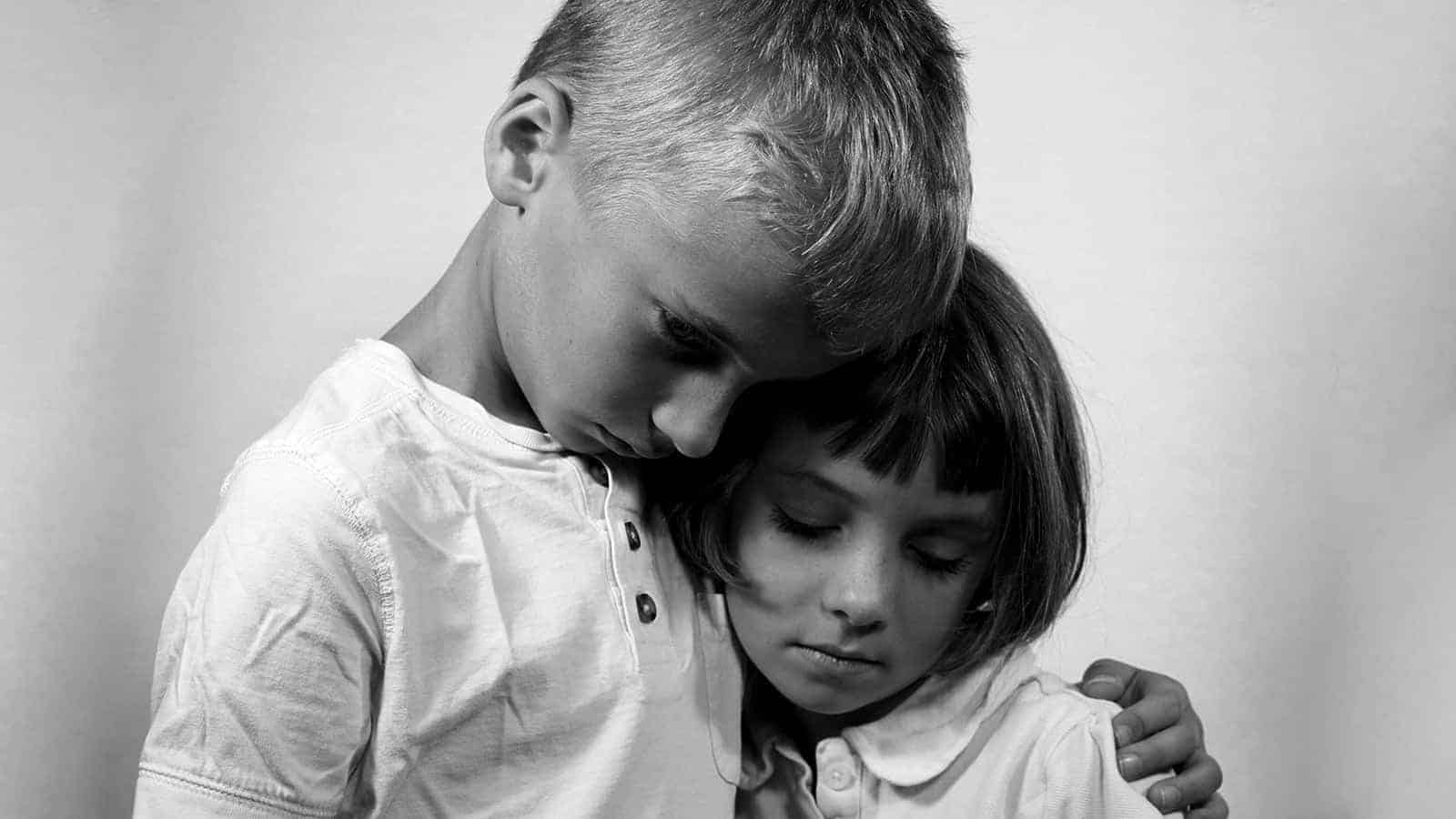What is empathy? It is merely putting yourself in someone else’s ‘shoes.’ It is understanding how someone else feels and responding with actions that can help remove their distress.
Some children can have a hard time learning compassion, and therefore, it is critical to teach it to them. How do you do this?
Strategies to teach empathy to your kids.
1. Talk to Your Kids Regarding Moral Engagement Mechanisms
According to research, the average person who is well-adjusted can be convinced to harm other people, even through torture, provided they are offered the proper rationale. In one study, participants were informed that they were taking part in a learning experiment that needed them to administer agonizing strong shocks to other people.
The experiment was fake and the person being shocked was an actor who pretended to be in agony after subjects pressed a button. The subjects were urged by a senior individual in a lab coat to carry out the torture, and they did.
Hence, with proper rationale, decent people are capable of disengaging their moral responses. Children can also do it. If kids are to be taught about compassion, it is critical they learn this research.
They need to learn the types of rationales that individuals use to excuse their cruel or insensitive behavior. One popular rationale is the tendency to see individuals from out-groups as less deserving of compassion and respect, or less human.
2. Educate Children about Failures of the Imagination
Many people have gone for an outing and gotten disappointed because they had not prepared well for it. They did not know how tired, thirsty, hungry, or cold they were going to be. According to studies, this is referred to as the ‘hot-cold empathy gap,’ which is a global problem.
When people are confident, calm, and comfortable, they don’t remember how it is to face challenges. They forget how desperate they can feel when exposed to pain, sleeplessness, hunger, and thirst. They also underestimate the potential of emotional states, such as fear.
The hot-cold empathy gap results in failures of compassion and mistakes in judgment. However, once you comprehend the working of the hot-cold empathy gap, you can use it to teach empathy to your kids.
For instance, when talking to your children about their painful feelings, you can offer cases of other people who have faced the same suffering. This will help the child feel that you acknowledge their feelings.
3. Help Children Develop a Moral Sense Based on Internal Self-control
Children are popular for being spontaneously sympathetic and helpful. However, research shows that children can have less likelihood of being sympathetic if they are materially rewarded for doing so.
Other studies reveal that children have a higher likelihood of developing a sense of right and wrong when their parents or guardians utilize inductive discipline, an approach that focuses on moral consequences and rational explanations. This is as opposed to heavy-handed punishments and arbitrary rules.
For example, children have a higher likelihood of internalizing moral principles when their parents discuss with them how doing wrong can impact other people. This induces feelings of guilt and compassion.
4. Teach Your Children How to Express Other People’s Emotions
According to studies, undergoing the motions of creating facial expressions can make you feel the related emotion. When participants imitated particular facial expressions, scientists noted some adjustments in brain activity that are characteristic of the related emotion.
People also undergo emotion-appropriate changes in body temperature, skin conductance, and heart rate. Hence, it is possible to improve the sympathy of your kids by teaching them to imitate the facial expressions of individuals they want to empathize.
5. Help Improve Their Skills of Face Reading
It is hard to be empathetic if reading faces is a problem. Some children, especially preschoolers usually misinterpret facial expressions.
Therefore, you can show them pictures of people revealing various emotions, including disgust, surprise, anger, happiness, fear, and sadness, and teach them what they mean. This will help solve the social problems they face due to the inability to read faces.
6. Teach Kids Compassion to Foster Cognitive Empathy
Role-playing and literature can offer kids with insights into other perspectives and minds. But you will need to teach them feelings of personal distress and how to avoid being overwhelmed by affective sympathy.
According to research, particular meditation practices, including compassion meditation and mindfulness meditation, can help with this issue. For instance, in compassion training studies, subjects visualize their past suffering and associate it to feelings of care and warmth.
To maintain concentration, they repeat phrases such as ‘may I be safe’ and ‘may compassion shelter me.’ Participants do the exercise again with the target of compassion being other individuals.
When it comes to adults, one-day training has been fruitful in yielding variations in behavior and brain activity. In comparison to people who only got memory training, people who got compassion training had a higher likelihood of assisting a stranger.
Similar training techniques have been utilized successfully with teenagers, and they can be adaptable to younger children. You can teach empathy to your children by helping them learn being attentive to their emotions and those of others, exercises in expressing gratitude, and brainstorming sessions for assisting others.
7. Use Role-playing and Literature to Foster Cognitive Empathy
The word empathy means sharing someone else’s emotions. However, emotion sharing can make you want to take a step back, particularly when you find someone in distress or pain.
Even when you resist this impulse, what you feel can distract you from properly judging the needs of the victim. Hence, to be great helpers, children not only need affective sympathy, but they also need cognitive sympathy.
Cognitive sympathy is the ability to take the perspective of the victim and imagine the actions that might make them feel better. This process results in more accurate judgments.
According to studies, people who have high cognitive sympathy do not step back when they see distress in other people. They are better in offering help as a response.
Real-life narratives and fictional stories provide a good chance for teaching compassion to a child. When the children understand the thoughts, beliefs, wants, and feelings of the characters, they will learn how the minds of others work.
Other studies reveal that role-playing is significant to teach empathy. When kids place themselves in the situations of others, they are more likely to be compassionate to these people.
8. Help Children Find out the Similarities They Share with Other People
Adults are more compassionate to people whom they share things in common. They are also able to feel sympathy toward an individual they know easily. According to research, kids experience the same biases.
Therefore, to teach your kids compassion, make them conscious of the similarities they share with others. Also, ask them to go out and interact with people from various backgrounds, and discover how life is in distant places.
Conversations can help children learn to be compassionate, but children are more influenced by other people’s actions than what they say. According to research, a lack of compassion for members of other groups has been promoted by failure to interact with these members.
Studies have also proven that education institutions improve compassion in students when they promote multiculturalism. Multiculturalism is a warm and inclusive attitude regarding cultural diversity. Additionally, this enhanced compassion is related to heightened happiness as well as academic achievement.
9. Offer Children Support for Development of Self-Regulation Skills
Feeling the pain of someone else is not pleasant. Hence, it must not be surprised when a kid steps back when they experience it. Kids have a higher likelihood of overcoming this impulse when they possess robust self-regulation skills and feel secure.
For example, when kids have secure attachment relationships with their caregivers, they know they can count on them for physical and emotional support. These kids have a higher likelihood of sympathizing and offering help to distressed people.
Moreover, kids who are excellent at regulating their adverse emotions have a tendency of showing greater compassion for others. Hence, you can foster compassion through emotion coaching. This means acknowledging the negative feeling of your children as opposed to dismissing them.
You also need to engage in conversations with your kids about the causes and impacts of emotions. You need to look for constructive ways that they can use to handle their negative feelings.
10. Induce and Model Sympathetic Feelings for Other People
In case you see a distressed person, whether on TV or real life, discuss with your kids about what that person could be feeling. Even a tiny conversation could assist.
For instance, in a study on Dutch school children aged between 8 and 13 years, hypothetical scenarios regarding school were presented to the children.
In a certain scenario, a child showed less willingness to help their classmates when they were not their friend, despite the distress being critical. But when the kids were asked to first think about the emotions of the subject of the scenario, they showed a willingness to help those who were not their friends.
Conclusion
A child who learns empathy at a young age quickly becomes emotionally intelligent. Whether it is in school or at work, they will be able to respond to scenarios in ways that will foster good relationships with their peers and authority.
Failure to teach empathy to kids, especially when they lack it, can result in a challenging life. When they grow up, they will have a difficult time maintaining relationships. They will also have a hard time at work and school since they will not be able to relate well with others.


















